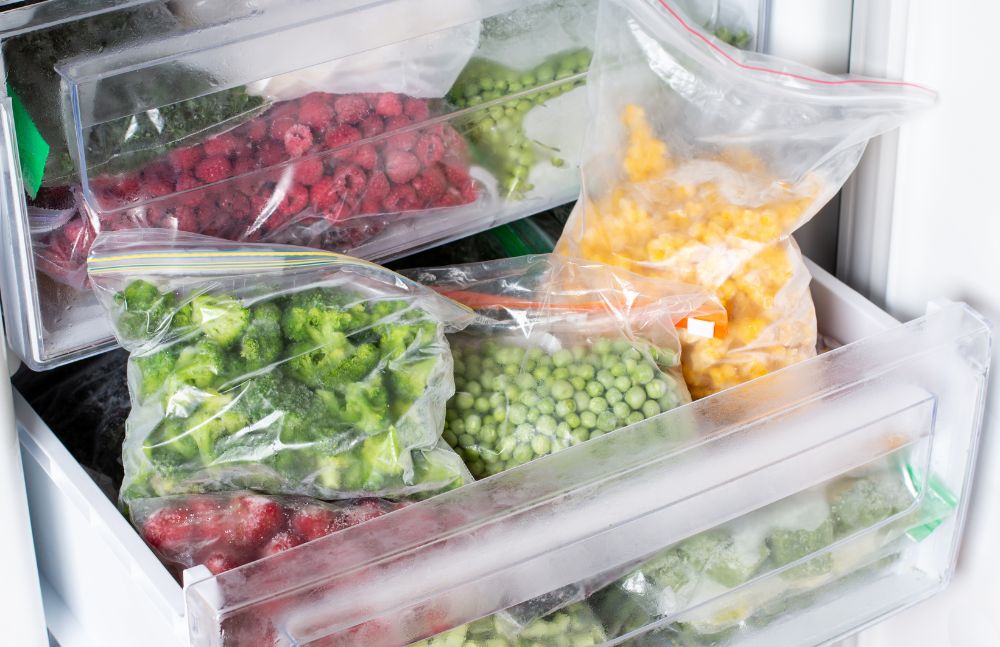Winter preparation: Maximize your freezer for comfort food

October, with its crisp air and shortening days, marks the beginning of the transition to winter. The leaves are falling, the scarves are coming out, and the craving for warm, comforting dishes is rising. It's the perfect time to start thinking about meals that will warm the soul and comfort the whole family on cold winter evenings. In this preparation, your freezer can become your best ally. It can store stews, savory soups and sweet treats that will delight young and old alike.
But before you start filling your freezer, it's essential to get organized and learn a few tricks to optimize its use. Follow these steps to make the most of your freezer and ensure a delicious seasonal transition!
1. Freezer cleaning and organization
Before you think about filling it, take the time to clean and organize your freezer properly. A clean, well-organized freezer makes it easier to access your dishes and prevents waste. Here's how it works:
- Defrost if necessary. If you notice a build-up of ice, unplug the freezer and let the ice melt. This will free up space and improve efficiency.
- Empty the freezer and get rid of any food that has expired or suffered freezer burn. This will give you an idea of the space available and ensure better hygiene.
- Clean the interior with a mild solution of warm water and white vinegar. This natural mixture eliminates odors and bacteria without leaving chemical residues.
- Organize the space according to the size and frequency of food use. Use bins or baskets to group foods by category: vegetables, meats, prepared dishes, etc. This organization will help you find your food more easily and avoid endless rummaging through your freezer.
2. Bulk cooking
The secret to making the most of your freezer in autumn and winter is bulk cooking. Take advantage of your weekends to cook large quantities of dishes that freeze well and will warm up your winter evenings. Think stews, soups, lasagne, gratins, chili con carne or even curries.
- Plan your recipes: Choose dishes that are suitable for freezing, and that need a few days' rest to allow the flavors to develop. Beef bourguignon, root vegetable soups, potato gratins and lasagne are perfect options.
- Cool dishes before freezing: Once cooked, allow your dishes to cool to room temperature before freezing. This will prevent condensation forming in the containers and ensure better storage quality.
- Portion food: Package your dishes in individual or family portions in airtight containers or freezer bags. Avoid freezer burn by removing air from the bags before sealing. This step is essential to preserve the texture and taste of your dishes.
- Prepare meals for different occasions: Plan dishes for quick weekday lunches, takeaway lunches and more elaborate meals for weekends or special occasions.
3. Intelligent storage
A well-organized freezer is the key to finding your food easily and avoiding waste. The method of storage is as important as the preparation of the dishes.
- Label containers: Label each container or bag with the preparation date and contents. This will help you to consume food in a logical order, starting with the oldest, and avoid unpleasant surprises when reheating.
- Categorize foods: Group similar foods together for easier access. Place soups in one corner, main courses in another, and desserts separately. If you have several drawers or compartments in your freezer, allocate a specific space to each type of food.
- Place frequently-used foods in front: To avoid leaving the freezer door open too long, place the dishes you use most often at the front.
4. Bases for soups and sauces
One of the best ways to save time in the kitchen is to prepare and freeze bases for soups and sauces. A homemade broth or tomato sauce prepared in advance can make all the difference.
- Broths and sauce bases: Prepare homemade vegetable, poultry or beef broths, then freeze them in ice cube trays. This allows you to defrost small quantities as needed.
- Vegetable purées: Squash, carrot or potato purées can also be prepared in advance and frozen in portions. They can be used as a base for soups or homemade purées.
- Ready-to-use sauces: Freeze homemade sauces such as tomato sauce, Bolognese sauce or curry sauce. You can then use them to liven up your dishes in the blink of an eye.
5. Breads and pastries
Don't forget that breads, muffins and other pastries freeze well. Prepare them in advance, so you'll always have something on hand to accompany your soups or round off your breakfasts.
- Homemade bread: Whether it's a baguette, wholemeal bread or rolls, freeze them once they've cooled. To eat them, simply take them out and let them defrost at room temperature, or pop them in the oven for a few minutes to restore their crispness.
- Pastries and viennoiseries: Muffins, croissants and other delicacies can be frozen raw or baked. For an impromptu sweet break, simply heat them up in the oven for a few minutes.
Conclusion
Preparing your freezer for winter will not only save you time on meal preparation, it will also enable you to enjoy tasty, comforting home-cooked meals at any time. By organizing and optimizing your freezer space, you'll be able to prepare varied, balanced dishes that will warm up your winter evenings.
As the days get shorter and colder, comfort yourself with the certainty of having delicious meals ready to enjoy. Your freezer, properly prepared and organized, will be your best ally for a winter of gourmet pleasure and conviviality.





